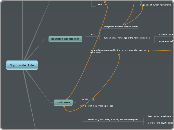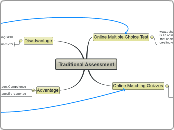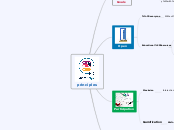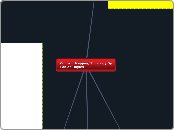child's need
food
transition period before the child can receive the usual food from the environment
psychological benefit
sensory experiences - body-mind knowledge - fundamental continuing relationship
beginning of human relationship - foundation of social life
physical benefit
enlarge the facial bones to accommondate the teeth
right composition at the right time
colostrum low in fat and high in protiens - antibiotics. and stimulate the digestive apparatus to move and pass meconium
taurine to develop the nervous system
stimulation
sensory stimulations - body-mind knowledge
contact
Symbiotic Life
what we should do
healthy attachment
natural detachment
unresponsive or not promptly enough - negative impression
impede the basic trust
overly responsive - without the experience of asking and receiving
enough opportunity to move the legs - wider space for movement
concentration - information gathering
independence
repeated separation and attachment
discover the advantage of a new life while reassured by the points of reference
respect the natural rhysm and mechanism of autoregulation
mother's presence and food will avoid developing an association of anguish and discomfort at night
5-6 times a day, last feding around 7-8pm and sleep until 2-3 - feed and sleep. around 6 to 8, sleeps through the night - solar pattern
mother comfortable seated in a quite place - feed the baby while looking at him
food should be a basic and pleasurable component of life, important occasion for social life
rich social and mental life
presence, voices, music, anything interesting to watch
sensory stimulation
sensory deprivation leads to crying
remain attached to the breast as long as he needs
great happiness and complete biological and psychological satisfaction
last part provides the greates pleasure shared with the mother plus nutrition - fat
put the breast near the child to allow hime to smell and feel. never into the mouth - active attachment - with love - no forced feeding
feed when awake and hungary
free timetable
observe the child
2 and half hours interval minimum
immediately after birth, put baby and mother together
physical and psychological feeling of emptiness
stay close together
security
bonding and attachment
first pillar of the psychological ego
optimistic
no matter what happens in his life, he will continue to strive for positive solutions to any difficult situation
possitive experiences
the world as represented by the mother promptly responds to his needs
result
fundamental knowledge of the new environment
separation between the self and non-self
vision of the world
integration between body and mind
psychological birth
basic trust
fundamental knowledge about the new environment
basic body-mind integration
needs more direct human contact to happen
walking
language
definition
6 to 8 weeks
exchange of things that are absolutely necessary
offer
mother
points of reference for attachment - through presence
voice
Newborns listen intently to their mother reading stories and prefer those read weeks before birth.
heartbeat
right food
child
suckling
physiological stimulation for the pituitary gland to produce prolactin that takes charge of the milk factory
start lactation
help the uterus to contract and avoid hemorrhage
presence
reassurance
preference relationshipp
start and maintain lactation
crying often makes the mother's milk to flow
life together
three forms of contact
breastfeeding
physical and psychological unity
special attachment
the attachment of the breast is a simple way to fulfill all the expectations
handling
positive emotional involvement of the mother
To the surprise of many people, new research suggests that newborns prefer to look at expressive, responsive faces. It’s as if they expect people to react to social interactions by using communicative facial expressions.
Psychologists have a method of testing for this understanding, and it’s called the Still Face paradigm. The procedure begins with an adult interacting in a normal way with the baby. Then the adult suddenly adopts a neutral facial expression.
When Emese Nagy tried this on 90 babies less than 4 days old, she found that newborns were more likely to change their behavior, look away, and show signs of distress (Nagy 2008).
knowledge about himself and the surrounding world
holding
acceptance and attitude of the mother matters
limits of the body









